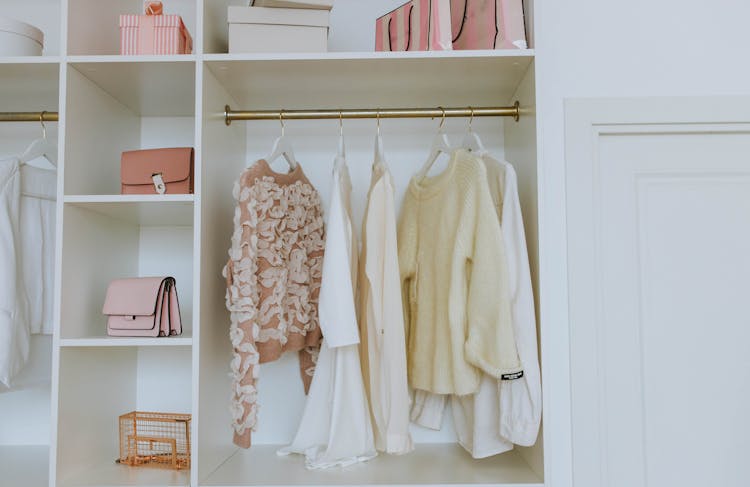All Categories
Featured
Table of Contents
TLDR Summary
- 🌿 Embrace sustainable fashion to minimize environmental impact.
- ♻️ Apply the "Five Rs of Fashion" for waste reduction.
- 👗 Opt for ethical and eco-friendly materials.
- 🧺 Engage in long-term wardrobe management techniques.
Sustainable fashion is not just a fleeting trend; it represents a pivotal shift in how consumers approach their wardrobes and the broader implications on the environment. It embraces a philosophy where garments are made with care for both people and the planet. Quality fabrics, ethical labor practices, and minimized use of resources are fundamental aspects of sustainable fashion. This movement encourages individuals to reconsider their buying habits and recognize the long-term benefits of investing in fewer, higher-quality pieces that last longer, ultimately leading to a more sustainable lifestyle.
The fast fashion industry, known for its rapid production cycles and disposable garments, significantly contributes to environmental degradation and labor exploitation. Studies indicate that clothing production doubled from 2000 to 2014, with the equivalent of a garbage truck full of textiles being dumped in landfills every second. These statistics reveal the urgency for consumers to shift their mindset: choosing sustainable options can drastically decrease one’s personal carbon footprint. By selecting pieces that are versatile and timeless, individuals can cultivate a wardrobe that minimizes waste while promoting ethical consumption. Explore how to curate an ethical wardrobe and reduce waste through sustainable practices.
Waste Not, Want Not: Eco-Conscious Wardrobe Management
Reducing waste is a multifaceted approach that begins with understanding the "Five Rs of Fashion": Reduce, Reuse, Recycle, Repair, and Resell. Each step serves as a guide to making thoughtful purchasing decisions. Reducing consumption is paramount; focus on purchasing items that you will genuinely wear and cherish. By being mindful of how much and how often we buy, we can greatly diminish the resource drain associated with fast fashion.
Next, consider repurposing or reselling garments. Thrift shops and online marketplaces allow for the sustainable circulation of clothing, extending the life of items and keeping them out of landfills. Repairing damaged clothes instead of tossing them can be incredibly rewarding, ensuring that beloved pieces are not lost forever. Moreover, recycling fabrics can help minimize the loop of waste and encourage a circular economy in fashion. Discover sustainable decluttering methods that can transform your closet.
Conscious Choices for a Greener ClosetCreative Solutions for an Ethical Wardrobe
In the realm of ethical fashion, recognizing the materials behind our clothing is essential. Garments made from organic cotton, hemp, and other eco-friendly fabrics minimize harmful impacts on the environment. Conversely, synthetic fibers like polyester are notorious for microplastic pollution, which adversely affects marine life. By opting for natural, sustainable materials, we can support environmental conservation while also promoting fair labor practices within the fashion industry.
Buying from brands that prioritize ethical practices contributes to a system where workers are treated with dignity and respect. Many consumers are now seeking transparency in the fashion industry, demanding to know where and how their clothes are made. This conscious choice leads to positive changes within the industry as more brands align their practices with sustainable values. Explore resources and guidelines for making ethical choices to deepen your understanding of sustainable fashion — learn about curating a mindful wardrobe that supports sustainability.
Long-Term Wardrobe Management
Successfully managing a sustainable wardrobe requires ongoing commitment. Before making new purchases, it's helpful to conduct a thorough closet audit. This entails assessing each item based on wear frequency, fit, and whether or not it aligns with your style. Understanding your wardrobe's strengths and weaknesses can aid in making informed decisions that support both sustainability and personal style.
Emphasize quality over quantity when it comes to clothing. Investing in timeless pieces that can be mixed and matched allows individuals to create multiple outfits from fewer items. This strategy diminishes the need to constantly buy new clothes, leading to a reduced environmental footprint. Additionally, exploring secondhand shops and vintage stores can unveil unique, high-quality items that tell a story while supporting sustainable fashion. By consciously prioritizing wardrobe management, we ensure that our clothing reflects not just our personal style, but a commitment to environmental and social responsibility.
Green Wardrobe: Practical Steps Towards Sustainability
Creating a sustainable wardrobe might seem daunting, but starting with a simple audit can make a world of difference. Begin by categorizing your clothing, identifying pieces you love and wear often. By focusing on quality and versatility, you can curate a wardrobe that not only reflects your personal style but also supports eco-friendly practices. Consider donating or recycling items you no longer need; this minimizes waste and extends the lifecycle of your garments. Remember, each small step contributes to a larger positive impact on our planet.
For those eager to learn more about sustainable fashion, resources like The Future of Fashion: Understanding Sustainability in the Fashion Industry and Sustainable Fashion and Textiles: Design Journeys provide valuable insights into eco-conscious practices in fashion. These texts encourage consumers to engage actively with stylistic choices that don’t compromise ethical standards. As you explore and apply the principles of sustainable fashion to your life, remember that every step, no matter how small, adds to a meaningful journey towards greener choices.
What are the main principles of sustainable fashion?
How can I declutter my wardrobe in a sustainable manner?
Key Takeaways
- 🌱 Sustainable fashion is a growing movement focusing on eco-friendly practices.
- 🛍️ The "Five Rs of Fashion" guide consumers to reduce waste effectively.
- 🧵 Ethical materials support social and environmental well-being.
- 📦 Long-term wardrobe management fosters conscious consumption.

Green Closet, Happy Planet: Sustainable Wardrobe Management
Latest Posts
The Ultimate Guide to Diamond Ring Cleaning
Eliminate Link Building Headaches with Menterprise
Setting Up Your NETGEAR Orbi 970: A Step-by-Step Guide